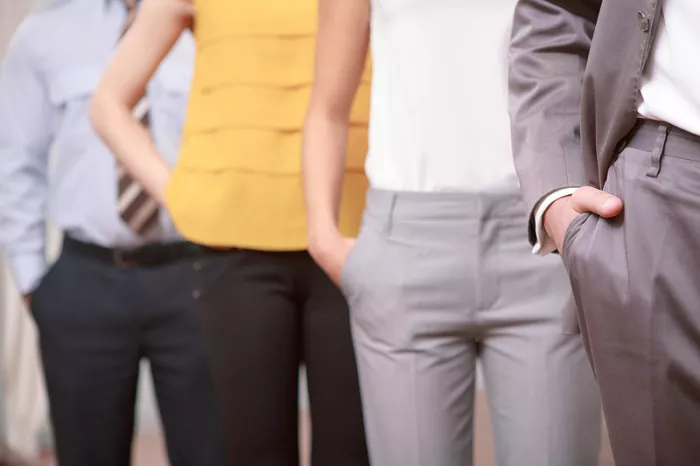Watching TV shows set before 2020, like The Office or Suits, feels like stepping back in time. Men in these shows typically wear black, navy, or grey suits with matching ties, while women opt for prim blouses or peplum tops with pencil skirts and high heels. Although these styles were once the norm, they now seem outdated compared to today’s more relaxed office wear.
Before the pandemic, traditional office attire was standard. However, with the onset of COVID-19, remote work became the norm, and the demand for formal clothing plummeted. The Office for National Statistics even stopped using the men’s suit as an inflation measure, citing a decrease in formal clothing demand.
The move towards remote work and changing social habits contributed to the decline of formal office attire. Alison Lowe MBE, a fashion consultant and course leader at the University of East London, notes that even before the pandemic, there was a noticeable shift. “Office style was already evolving,” she tells Harper’s Bazaar. “Dress-down Fridays were becoming more common, and casual pieces like relaxed trousers, t-shirts with suits, and casual jackets were entering everyday workwear. There was also a trend towards blending high-end designer items with affordable fast-fashion pieces.”
Brands like Everlane and Uniqlo popularized minimalist office wear. Professional workers began favoring clean lines and muted colors for a versatile, timeless wardrobe.
During lockdown, comfort took precedence. Forbes reported a 143% increase in pyjama sales in the early months of the pandemic, alongside a 13% drop in bra sales. Interestingly, while trousers sales decreased, tops sales went up. Many workers invested in ‘Zoom shirts,’ which were slightly more formal tops worn for video meetings. According to LinkedIn, 42% of workers owned a ‘Zoom shirt.’
As work restrictions eased in late 2021, the return to pre-pandemic work habits was not immediate. Hybrid work models became common, with a 2023 Office of National Statistics survey showing that 44% of workers now split their time between the office and home.
The comfort trend from home has carried over to the office. Lowe describes this as the “casualisation of office attire.” Oversized and softer silhouettes are replacing more structured clothing. “Professionals are seeking comfortable yet polished looks,” she explains. “Sneakers with suits, soft fabrics, stretchy materials, and tailored joggers are now common. A minimalist approach, with high-quality, timeless pieces, is also gaining popularity.”
Younger office workers, especially in creative fields, are driving this change. A Juv Consulting survey found that 82% of Gen Z consider fashion crucial for expressing their identity. “Younger workers prefer casual attire to reflect their personal style,” Lowe says. “In contrast, industries like banking and law maintain formal dress codes to convey professionalism.”
The pandemic accelerated changes that were already underway. While there is some nostalgia for traditional office wear, as seen on TikTok’s ‘office siren’ trend, Lowe believes that casual workwear will likely remain dominant. “A hybrid approach to dressing will offer flexibility, comfort, and professionalism.”
Despite this shift, not all fashion is casual. McKinsey’s State of Fashion report reveals that luxury fashion is thriving, with a 36% rise in economic profit. This suggests that while office attire may stay casual, special occasion dressing is becoming more extravagant.
“Consumers are rethinking their approach to work and formalwear,” Lowe concludes. “Office dress may remain casual, but special occasions will see more statement-making outfits that allow people to stand out.”
Related topics:
- Fashion Designer Darius Rosario Inspires Community In Hampden County
- What To Wear To A Summer Fashion Show
- When Was Chanel’s First Fashion Show?

